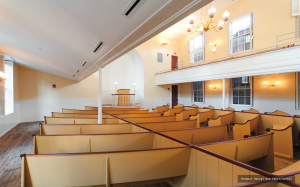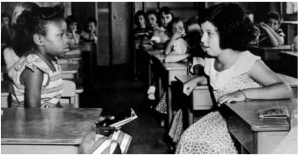The Abiel Smith School, located at 46 Joy Street, Boston, was built between 1834 and 1835. It was built by the City of Boston to house the African School. Starting in 1787, many black Bostonians fought tirelessly against the inequality and discrimination in public schools. They petitioned the state legislature claiming that it was unjust for their taxes to support the education of white children when the city had no school for black children. However, a small number of African American children did attend the city’s white schools in the early 1800s.
In 1798, sixty members of the black community organized the African School in order to educate their children. This school first met in the home of Primus Hall. It moved into the first floor room of the African Meeting House in 1808. Then, the African American children who were enrolled in Boston public schools started to attend the African School. In 1812, the Boston School Committee finally became worn down by decades of petitions and requests; they officially recognized the African School and started providing partial funding ($200 yearly), but the condition of this school remained poor and space was inadequate.
In 1815 white businessman Abiel Smith died and bequeathed $4,000 for the education of African American children in Boston. The school committee used interest from this money to fund the African School and they later used a portion of it to construct the Abiel Smith School. The Abiel Smith School was opened on March 3, 1835, but the conditions in this school were inferior to those of the white schools in Boston and the black community continued to fight for equal opportunities in education.
One of the most forceful advocates for school integration was African American historian-activist William Cooper Nell. When Nell was a student at the African School, he was awarded the prestigious Franklin Medal, along with two other African Americans. Yet, instead of receiving the medal, they were given biographies of Benjamin Franklin and they were not invited to the award ceremony at Faneuil Hall. Nell did attend the ceremony dinner, but not as a guest. He persuaded one of the waiters to allow him to help serve the white honorees and guests. It was on this night that Nell vowed, “God helping me, I would do my best to hasten the day when the color of the skin would be no barrier to equal school rights.”
Another activist was Benjamin Roberts. He filed suit against the Boston School Committee in 1849. Roberts wanted his daughter to be able to attend the school closest to their home and he wanted to challenge Boston’s segregated system. His lawyers were Charles Sumner and Robert Morris, who was the first black attorney in Massachusetts. Their arguments were forceful and articulate (and later used as precedent in Brown v Board of Education), but they did not win the lawsuit.
Also in 1849, most African Americans in Boston chose to withdraw their children from the Abiel Smith School to protest against segregated education. In 1855, success was achieved when the Massachusetts Legislature outlawed “separate schools,” but Boston was the only place in the commonwealth that still maintained segregated education. African American children started attending other public schools, including the Phillips School, and the Abiel Smith School was closed that same year.
The Abiel Smith School is now a National Historic Landmark.
https://www.nps.gov/boaf/learn/historyculture/abiel-smith-school.htm




